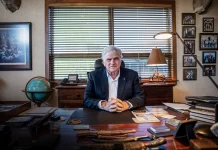Keisha Russell, a lawyer at First Liberty Institute, argued against the Supreme Court nomination of Judge Ketanji Brown Jackson, based on the judges belief in Critical Race Theory. This testimony was given on the final day of the Senate Judiciary Committee’s Supreme Court confirmation hearings.
Transcript
Good morning and thank you for the opportunity to testify.
I’m a constitutional lawyer at First Liberty Institute. First Liberty is a national legal organization with a mission to defend and restore religious liberty for all Americans. In addition to being a lawyer, I’m also the daughter of Jamaican-born parents, and I’m a former elementary school teacher in Atlanta Public Schools.
I’m here to explain how Critical Race Theory may impact a judge’s judicial philosophy, including the fulfillment of her oath to uphold the Constitution as well as to remain impartial and a uphold the integrity and independence of the judiciary.
Critical Race Theory or CRT is a subset of critical theory that began with Immanuel Kant and the 1790s. Critical theory rejected the principles of the Enlightenment and the Age of Reason on which the American Republic was founded. Critical Theory teachers that all human relationships are relationships of power between the oppressors and the oppressed. The oppressor and oppressed lens of critical theory helped establish totalitarian ideologies such as Marxism and Nazism. CRT’s key assertion is that racism is not the result of individual conscious prejudices actions or thoughts, but rather that racism is a systemic and structural force. CRT teachers that racism is embedded in America’s legal systems, institutions and capitalist economy and it demands whiteness as a societal norm.
I will address three of CRT’s erroneous assumptions and the possible impact on judicial philosophy.
Number one, believing that America was founded on race ideals is wrong and compatible with a judge’s ability to uphold the Constitution.
CRT proponents claim that America was founded and the Constitution was drafted to promote racism and slavery. Historians have debunk this claim as false. The truth is that America’s Founders were divided on this issue of slavery and many of the founders were abolitionists. America’s core ideals of freedom and equality, expressed in the Declaration of Independence and the Constitution, sparked a movement that led to the eventual elimination of both slavery and Jim Crow. CRT is sometimes erroneously analogize to the civil rights movement and some CRT proponents even assert that Dr. King was a critical race theorist, but he was not. Now King would argue that Bull Connor, the head of the Birmingham, Alabama police, and the southern racists, were violating the principles of the American founding. But Critical Race Theory would argue the opposite, that Connor was the fulfillment of of the American founding, because America was founded to perpetuate this white supremacy. Ultimately, we cannot expect someone who subscribed to Critical Race Theory to defend and protect the Constitution because CRT assets that the Constitution is not worth defending. Such a view completely contradicts the oath every judge takes.
Number two, a judge who embraces Critical Race Theory perspective that America must address racism by encouraging racism, cannot be an impartial judge.
Contrary to CRT’s assertion that racism is socially created, racism is a result of individual feelings of superiority and prejudice, there’s no doubt that bad laws will further a racists society, but such racism must first be alive in an individual before it can become alive in society. Ultimately when unaddressed prejudice gets married to power, there is going to be an unintended pregnancy which will give birth to the evil of racism. Since personal prejudices advance a racist society, we cannot address racism by encouraging racist behaviors. Mr. Kendi, on of CRT’s advocates brazenly declares that the only remedy to prevent discrimination is future discrimination. In essence CRT proposes that the oppressed must be granted advantages in society to the detriment of the oppressor group in order to address passed injustices. Adherence to CRT removes the principle of equality before the law that is necessary for just decision-making. Consider, for example, how CRT philosophy could influence a judges view on criminal sentencing. If a judge believes that the only way to correct racism is to provide advantages to blacks the disadvantages whites, this would create dire injustices in that judges practices. A judge who embraces the CRT views may engage in favoritism and partiality contrary to the judicial canons.
Number three, a judge must uphold the integrity and independence of the judiciary, and she cannot do so if she considers systemic racism in her decision-making. While racism is alive in the hearts of many people in our country, it does not determine the outcome of any minorities educational, professional, or economic accomplishments. My own testimony is a reflection of this truth as I am a first generation American and the daughter of Jamaican-born parents, and despite the fact that my parents came to this country to build a life for themselves from the ground up, my parents still raised many successful children. CRT does not acknowledge that regardless of the struggle that people face in life, we are all individually responsible for the lives we live and the success we attain. Instead CRT makes race the predominant, relevant factor. Every lawyer and judge promises defend and protect the U.S. Constitution but she cannot uphold this oath if she believes that the Constitution and the principals of America’s founding are inherently racist and inherently flawed. Neither can a judge remain impartial and administer judgements independently if she holds a philosophy that correcting racism requires affording privileged oppressed less justice than oppressed classes. Ultimately a judge should consider America’s history as a lesson and a blueprint for why and how we must constantly seek to hold and protect America’s founding promises. For these reasons, First Liberty opposes the nomination and I thank you for the opportunity to testify today.














































